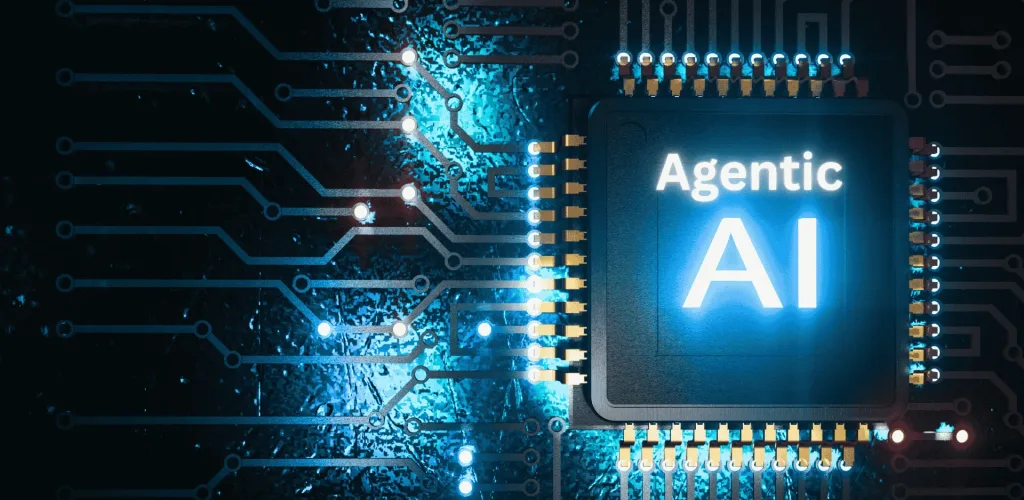
Agentic AI Systems: The Future of Autonomous Artificial Intelligence
Artificial Intelligence (AI) is transforming our world faster than ever—but we’re entering a new chapter that’s even more revolutionary: Agentic AI Systems. These intelligent systems don’t just respond to prompts—they act like autonomous agents capable of planning, reasoning, and executing complex tasks independently.
In this blog post, we’ll explore what Agentic AI is, how it works, why it’s trending, and what it means for the future of business, technology, and everyday life.

What is Agentic AI?
Traditional AI models, like chatbots or virtual assistants, work on a single-turn interaction: you ask, they answer. Agentic AI systems go far beyond this.
An Agentic AI is an autonomous system that:
✅ Sets goals
✅ Plans multi-step tasks
✅ Makes decisions
✅ Uses tools or external data sources
✅ Learns and adapts over time
Think of it as an intelligent assistant that can think, act, and coordinate actions—almost like having a digital colleague who can handle projects independently.
Why Are Agentic AI Systems Trending?
Several technological advances have fueled the rise of Agentic AI:
1. Large Language Model Capabilities
Modern language models like GPT-4 and GPT-5 can understand context, reason across multiple steps, and maintain memory, enabling far more complex tasks.
2. Need for Complex Automation
Businesses want AI that can go beyond answering questions to actually perform tasks—researching, drafting reports, booking appointments, managing workflows, and more.
3. Tool Integration
Agentic AIs can connect to APIs, web browsers, databases, and productivity tools, giving them real-world utility.
4. Orchestration Frameworks
Platforms like LangChain, AutoGen, CrewAI, and OpenAI’s tools API make it easier for developers to build AI agents that can handle intricate workflows.
5. Cost and Efficiency
Enterprises see huge potential savings and efficiency gains from deploying agentic systems in customer service, research, content creation, and data analysis.
How Do Agentic AI Systems Work?
Let’s break it down into a typical agentic workflow:
Step 1 — Goal Definition
The user provides a goal:
“Summarize the latest research in quantum AI.”
Step 2 — Planning
The AI breaks this into sub-tasks:
Search for new papers
Extract key findings
Write a summary
Step 3 — Tool Use
The AI uses tools:
Browsers for searches
APIs for document retrieval
Internal models for summarization
Step 4 — Memory & Context
It tracks progress and remembers what it has learned during the session.
Step 5 — Decision-Making
The agent decides what to do next, e.g.:
Dig deeper into a particular paper
Conclude the report
Step 6 — Execution
Finally, the AI delivers the output:
“Here’s a summary of the latest Quantum AI research.”
Use Cases for Agentic AI Systems
Agentic AI is rapidly finding applications across industries:
✅ Business Automation
Automating complex workflows
Generating reports or proposals
Managing schedules and meetings
✅ Research & Analysis
Summarizing vast datasets
Performing competitive analysis
Creating technical overviews
✅ Software Development
Writing and debugging code
Generating unit tests
Refactoring projects
✅ Customer Support
Resolving multi-step customer queries
Managing ticketing systems
Following up proactively with customers
✅ Personal Productivity
Acting as personal virtual assistants
Managing projects and reminders
Organizing information and documents
Challenges in Building Agentic AI
While promising, agentic AI still faces hurdles:
Error Handling
Agents may “hallucinate” steps or produce incorrect results.Cost of Running Large Models
High-performance models remain expensive to run continuously.Security & Privacy Risks
Autonomous systems handling sensitive data require strict controls.Complexity of Orchestration
Building reliable agents involves intricate software engineering.
Despite these challenges, progress is rapid—and many experts believe agentic systems will soon become a core part of everyday business and technology workflows.
The Future of Agentic AI
Agentic AI represents a paradigm shift in artificial intelligence. Instead of merely assisting, AI will increasingly become an active participant in the workforce, handling projects, communicating with systems, and even coordinating teams of other AIs.
It’s not just about faster responses—it’s about intelligent, autonomous systems capable of getting real work done.
For businesses, this means massive potential gains in productivity and innovation. For individuals, it could transform how we work, learn, and manage our lives.
Conclusion
We’re on the brink of an era where Agentic AI systems will reshape industries, redefine workflows, and open new frontiers for human-machine collaboration. The possibilities are enormous—and we’re only getting started.
Curious about how Agentic AI could impact your business or career? Stay tuned to our blog for more insights into the future of AI!
